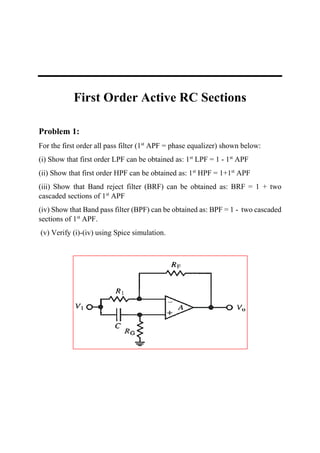(1) The document discusses obtaining first-order low-pass, high-pass, band-reject, and band-pass filters from a first-order all-pass filter.
(2) It shows how to derive the transfer functions for each filter type by adding or subtracting the input and output of one or two cascaded all-pass filter sections.
(3) Key specifications of each filter like cutoff frequencies, gain, and bandwidth are calculated and verified through SPICE simulation, showing good agreement between calculated and simulated responses.














